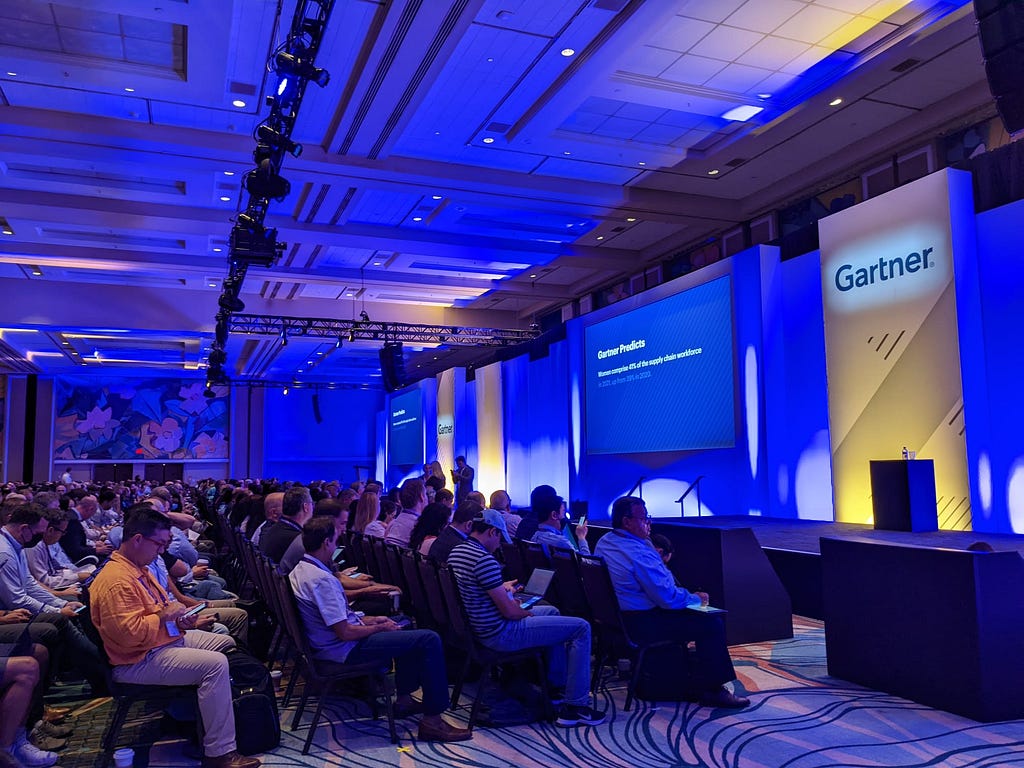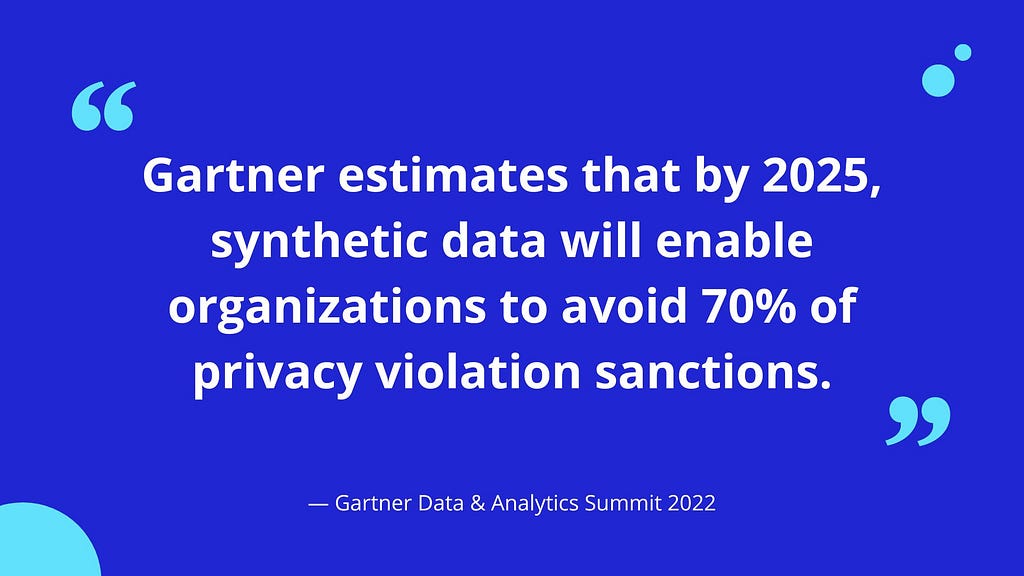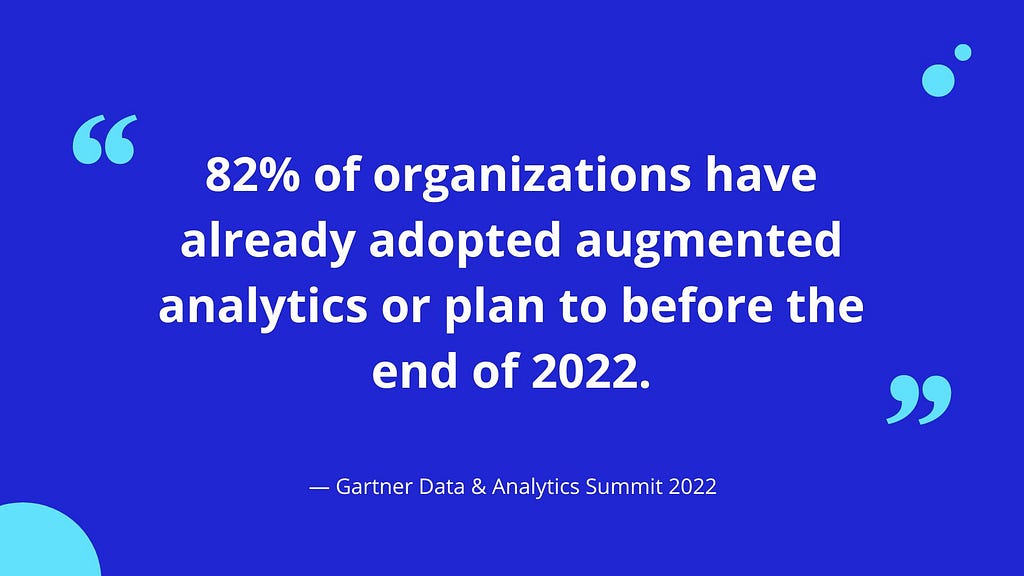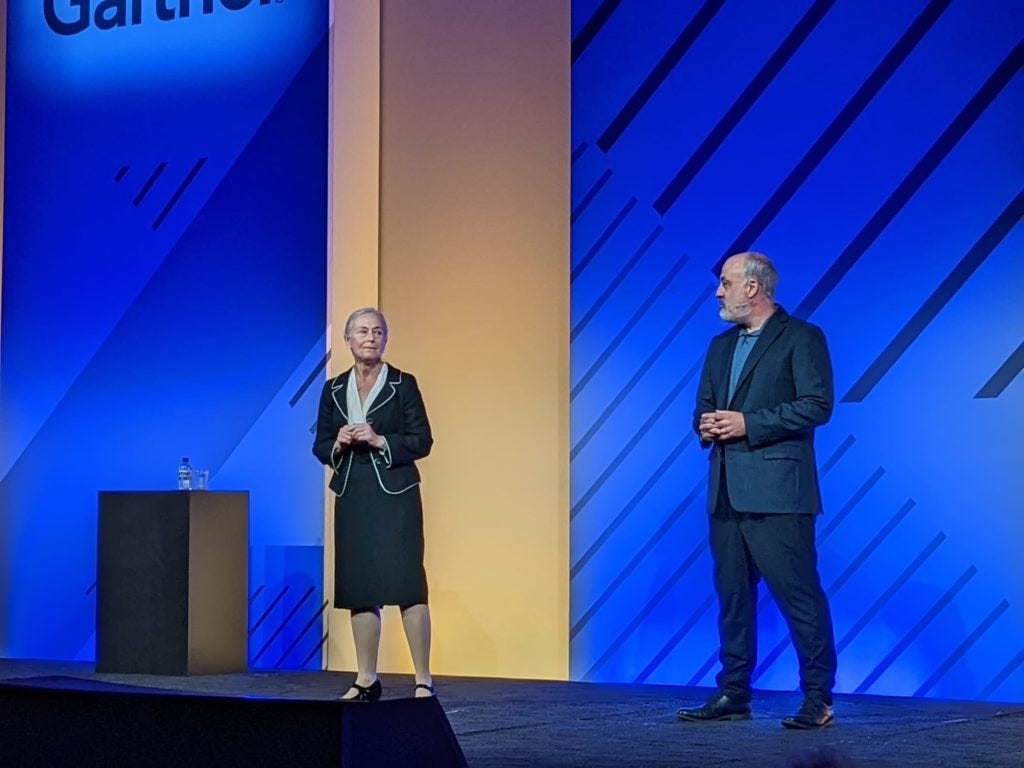https://ift.tt/CzABHMJ Augmented analysis, synthetic data, adaptive governance, and more 2022 Gartner Data & Analytics Summit opening...
Augmented analysis, synthetic data, adaptive governance, and more

We now live in a world of perpetual uncertainty. Businesses that can handle that uncertainty are ones that will navigate the future most successfully.
— Gartner Data & Analytics Summit 2022
As the pandemic has shown, organizations that cannot or will not change are in for a heap of trouble in today’s new world. Today, the humans of data have the weighty responsibility to act as agents of change and continuously drive innovation, both within their own teams and throughout their organizations.
The theme of this year’s Gartner Data & Analytics Summit was “Unleash Innovation & Transform Uncertainty”. In the opening keynote, Debra Logan (Distinguished VP Analyst at Gartner) and Gareth Herschel (VP Analyst at Gartner) talked about how data teams and leaders can drive innovation and create meaningful business value.
Here are the four big ideas you should know from this year’s Summit:
- Change data from a liability to an asset with small data, synthetic data, and active metadata
- Treat analytics as both an art and a science with augmented analytics
- Become a “Decision Designer” to accelerate decisions and deliver insights at the right time
- Balance control and enablement with three types of governance
Become a “data concierge,” not a data plumber
We don’t need lots of data. We need the right data, the data that makes us smarter.
— Gartner Data & Analytics Summit 2022
In the data world, we have a bad habit of giving in to FOMO and thinking that more data is better. ”What if I don’t include this data set and need it later? I may as well add it to be safe.” The cloud has only enabled this habit by giving us unlimited space to store data.
But despite the seductive promises of the cloud, we can do better. After all, data isn’t harmless — it carries risk, and the wrong data can be a liability.
Instead of being “data plumbers,” setting up countless pipelines to bring data from its source, Gartner explained that we should act as “data concierges,” guiding people to the right data. Before you dive into your data, stop and answer a few questions about the data you are collecting and using:
- Are we gathering the right data?
- Are we finding the right insights?
- Will our analysis actually drive outcomes?
- Does governance help or hinder innovation?
Big data is out — small data and synthetic data is in
Stop collecting data just in case. Substitute big data with small data, and real data with synthetic data.
— Gartner Data & Analytics Summit 2022
When we give in to FOMO and ingest all the data we possibly can, we often end up with junk data bloating our systems. This keynote explained the importance of going on a “data diet,” focusing on the data that’s most important rather than trying to ingest and analyze data.
Instead of big data, think small data. What is the “minimum viable dataset” you can create, just like how we think about an MVP (minimum viable product) in the tech world? Often this “MVD” can be just as impactful and far quicker to create than a far bigger dataset.
Small data can be more insightful than the most comprehensive assembly of big data… We should aspire to the creation of minimum viable data.
— Gartner Data & Analytics Summit 2022
Another way to ensure that your data stays an asset rather than a liability is to leverage synthetic data. Gartner estimates that by 2030, synthetic data will completely overshadow real data in AI models.
Synthetic data is data that is manufactured for use in AI models. It retains the structure of the original data but is not exactly the same. Though this may sound like a futuristic dream, synthetic data is alive and well — and it’s just getting stronger. Without real people’s information, synthetic data sets don’t have the same privacy concerns as real data sets.

Leverage the power of active metadata
By 2025, active metadata–assisted automated functions in the data fabric will reduce human effort by a third while improving data utilization fourfold.
— Gartner Data & Analytics Summit 2022
Last year, Gartner introduced the idea of active metadata by replacing its Market Guide for Metadata Management Solutions with the inaugural Market Guide for Active Metadata. This year, Gartner has gone all in on active metadata, integrating it into nearly every talk across different topics.
What actually is active metadata? Gartner’s basic definition is that it is “a set of capabilities that enable continuous access and processing of metadata that support ongoing analysis…”
In practice, active metadata functions as a layer on top of the modern data stack. It leverages open APIs to connect all the tools in your data stack and ferry metadata back and forth in a two-way stream. This is what allows active metadata to bring context, say, from Snowflake into Looker, Looker into Slack, Slack into Jira, and Jira back into Snowflake.
By stitching together your data stack and increasing context for diverse users, active metadata is the key to enabling the data fabric. It can be used to figure out what data you actually have, increase efficiency in using that data, and drive powerful use cases to increase the value of that data (such as identifying data drift and finding new categories of data).
Think of augmented analytics as both an art and a science
Analytics and AI are incredibly intelligent today. They can beat us at chess, poker, bridge, Go, and just about every game we’ve invented — and they’re even starting to invent new games! But in the resulting sea of analytical insights, how can you focus in on what matters most?
Augmented analytics frees people to focus on what they’re good at, filtering out the noise.
— Gartner Data & Analytics Summit 2022
Just like an explorer who only brings back the most important information, augmented analytics identifies the most important signals in our data. This helps filter out the noise and free people to focus on what they’re good at.

Even with the power of augmented analytics, Gartner emphasized that analytics is more of an art than a science.
In science, we think about maximizing our outcome — i.e. creating the best answer. But often in data, we don’t need the perfect answer. In fact, that usually isn’t even possible because our data is imperfect and incomplete.
Instead, we need to create the best answer for now. Analytics is fundamentally subjective and imperfect, so start by establishing what “good” looks like and then stop when you reach it. (Time-boxing and Scrum techniques can be helpful here.) This is critical because data teams have limited time and resources, so every question answered perfectly is potentially another question left unanswered.
Art is about provoking and challenging questions. Good analysis answers questions, but great analysis prompts us to ask new and better questions.
— Gartner Data & Analytics Summit 2022
Become a “Decision Designer” to influence how decisions are made
Decisions are hard, and maintaining them is even harder. After all, everyone didn’t convert to a plant-based diet after learning it reduces cardiovascular disease), and most New Year’s resolutions are broken by mid-February. So if giving people data doesn’t always work, how can we actually drive better decision-making?
According to Gartner, the answer is to become a “Decision Designer”, or sharing data and insights in the way that is most likely to actually create change. There are three ways to do this.
First, deliver insights at the right time. Executives want to make decisions, but by the time their numbers are crunched and insights are ready, that decision is long overdue. This is where augmented analytics comes into play. With faster analytics that can even actively flag issues and identify opportunities or challenges, it’s easier to link data outputs with real decisions.
Executives want to make decisions, but often analysis is out of sync with what they need.
— Gartner Data & Analytics Summit 2022
Second, accelerate decisions with automation. Did you know that marketing offers made in real time are twice as successful as ones sent just a short time later, and ten times more effective than ones made out of sync with customer actions? Timing matters, and the faster you can respond to questions with relevant insights, the more they’ll be used in decision-making.
Third, connect your decisions. Organizations are increasingly digitized with data collected and analyzed across functions, so why are decisions still often taken in silos? Connecting decisions that different teams, groups, or verticals are making can help companies optimize the bigger picture, rather than letting decisions get bogged down in individual bias or team politics. This is where active metadata’s capability to connect diverse tools across a data stack comes into play.
Governance isn’t about control
Governance has a bit of a bad reputation. But if we want to innovate, we really need to do governance. It’s just the process of deciding how to get things done.
— Gartner Data & Analytics Summit 2022
Governance gets a bad rap, but it doesn’t have to be scary or hinder our work.
According to Gartner, the most important thing to remember is that governance isn’t uniform — it comes in different flavors. Sometimes governance is about control when you’re playing defensively to protect against risk. But sometimes it’s about enabling creativity or adapting to changes.
Governance isn’t one-size-fits all. There are actually three different types of governance you should know about — strategic governance, control governance, and adaptive governance.
According to Gartner, adaptive governance “enables flexible and nimble decision-making processes that help an organization respond quickly to opportunities, while continuously addressing investments, risk and value”.

It’s clear from this year’s Summit that data is in an exciting place. After unprecedented social and economic upheaval, it seems that data leaders are raring to respond to past disruption with new levels of innovation and impact. I can’t wait to see where we go from here and what’s in store the data world in the coming year!
P.S. Stay tuned for more insights, trends, and learnings from the Gartner Data & Analytics Summit 2022. I learned a ton here, and I can’t wait to share it with you all soon.
Want to chat about the endless possibilities of the modern data stack and active metadata? Reach out to Prukalpa or the team at Atlan.
This blog was co-written with Christine Garcia.
Key Takeaways from Gartner Data & Analytics Summit 2022 was originally published in Towards Data Science on Medium, where people are continuing the conversation by highlighting and responding to this story.
from Towards Data Science - Medium https://ift.tt/kjbSmVr
via RiYo Analytics

ليست هناك تعليقات